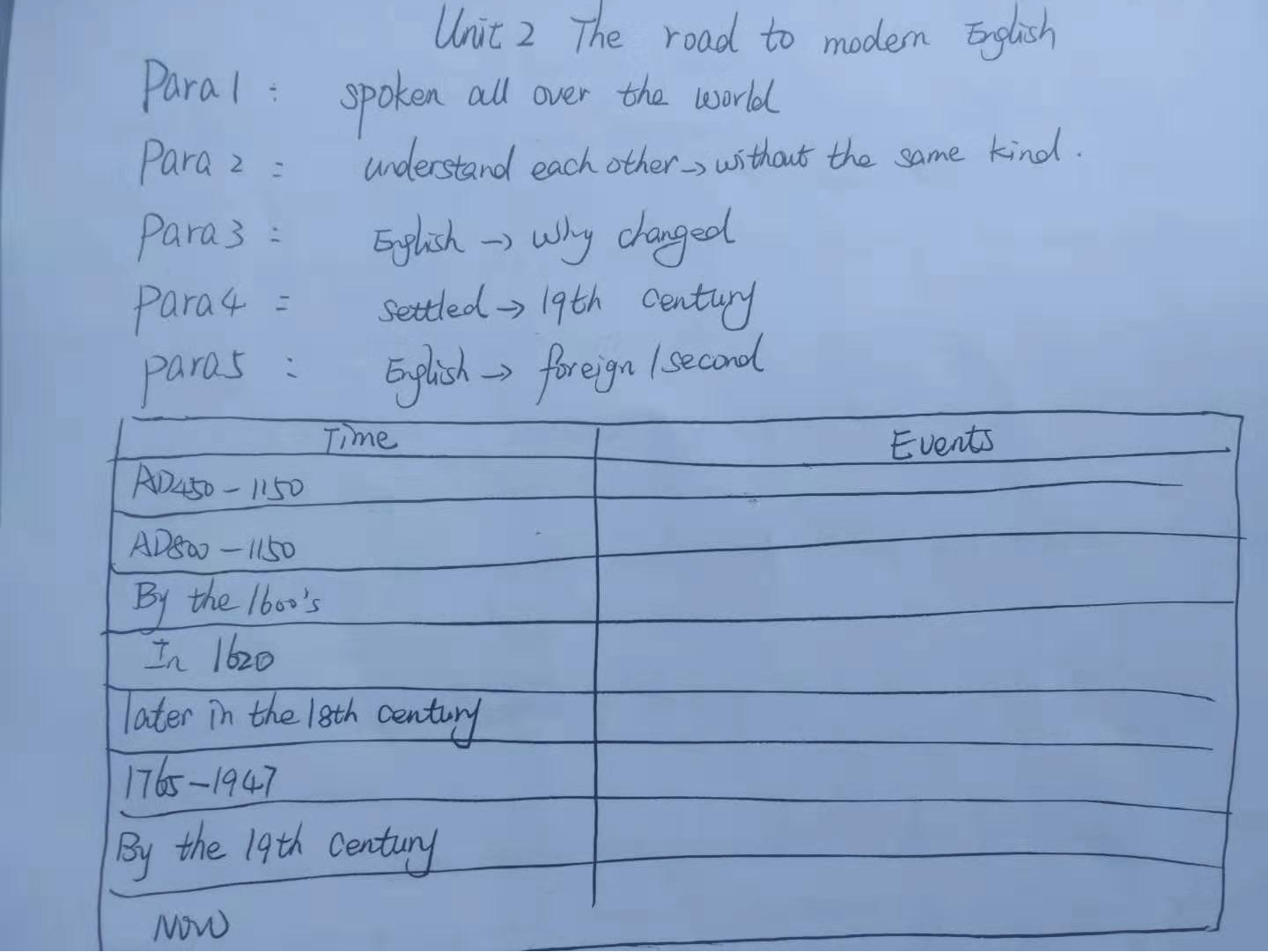

http://m.shoucloud.cn 2019-09-27 09:27 教師招聘網(wǎng) [您的教師考試網(wǎng)]
Para 1: English is spoken all over the world.
Para 2: understand each other→without the same kind.
Para 3: English→why changed
Para 4: settled→19th century
Para 5: English→foreign or second
Activity 2: scanning
Scan the passage and do exercise T or F on Page 10. And make a timeline of the development of English.
By doing this, students can get a further understanding of the passage.
|
Time |
Events |
|
AD 4500-1150 |
|
|
AD 800-1150 |
|
|
By the 1600’s |
|
|
In 1620 |
|
|
Later in the 18th century |
|
|
1765-1947 |
|
|
By the 19th century |
|
|
Now |
|
By these activities, ss will get a further understanding of the text.
Activity 3: intensive learning
According to the context, students read the passage carefully and guess the meaning of the new words. Then have a group discussion: why do you think people all over the world want to learn English?
It is beneficial for the students to master the new words and improve their reading strategies such as information gathering and summarizing and cultivate their cooperative spirit.
Step 3. Post-reading
Activity 1. Retell the passage
According to the blackboard, ask some students to retell the passage to check whether they have got the main idea and specific information of the passage.
Activity 2. Group discussion
Ask students to discuss why do you think more people all over the world want to learn Chinese? In this way, students can realize that learning language is a good way to broaden their horizon.
Step 4. Homework
1. Write an article about why more and more people want to learn Chinese.
2. Surf the internet find the development of Chinese.
Part 6. Blackboard design
Here is my blackboard design. It is easy and clear. It includes the title, the main idea and the key questions about the passage which show the key and difficult point clearly.

責(zé)任編輯:郭爽
公眾號(hào)

視頻號(hào)

小紅書

小程序

APP

關(guān)于華圖
新手指南
網(wǎng)站產(chǎn)品
公眾號(hào)

視頻號(hào)

備考群

投訴建議:
電話:400-8989-789
京ICP備16044424號(hào)-2京公網(wǎng)安備 11010802023064號(hào) Copyright © 2001-2024 hteacher.net 北京中師華圖文化發(fā)展有限公司 版權(quán)所有